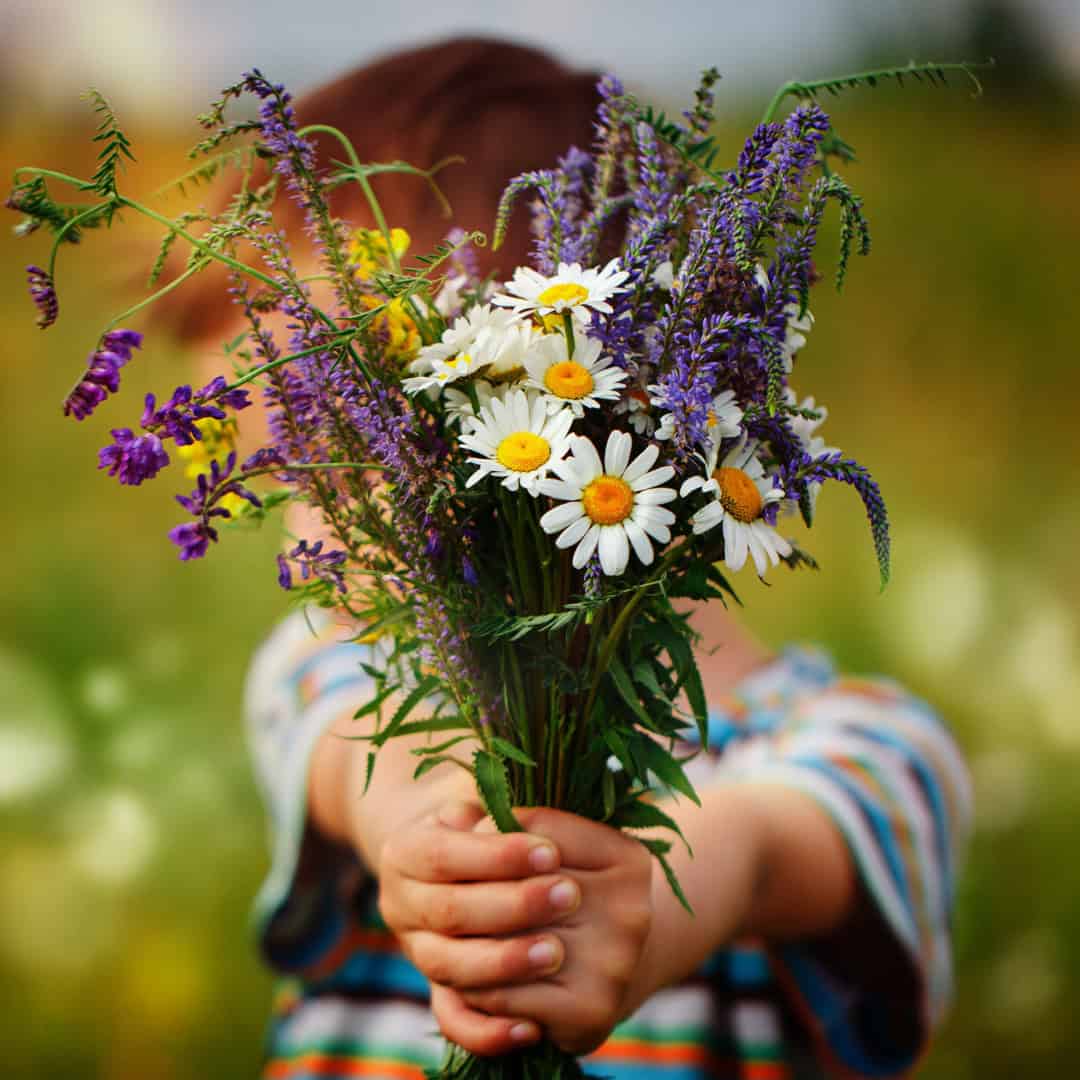
Two hours per day outdoors can positively impact young people’s mental health, Canadian researchers find
Thank you to Ivana Polackova, Dr. Louise de Lannoy, and Taylor Bradbury for providing this post.
This post is featured on Ciernalabu.
Less than five per cent of Canadian teenagers spend at least two hours a day outdoors in physical activity – despite the fact that this very time frame brings significant benefits for their mental well-being and life satisfaction. The alarming trend of youth disconnection from nature, but also the positive consequences of returning to the outside world, is highlighted in a study conducted by researchers Louise de Lannoy and Taylor Bradbury. We asked them why it is important to move and play outdoors.
Živica has been supporting outdoor learning in schools for several years through the Hurá von! platform, and in the last year has focused primarily on supporting the mental health of children and teenagers in schools in direct connection with outdoor living/learning. In Canada, you recently conducted research on the impact of outdoor physical activity on mental health, overall satisfaction, and happiness among Canadian adolescents aged 12 to 17. Which institutions collaborated on the research and what was its main goal?
TB: The primary goal of our research is to help improve the mental health of youth in Canada by filling the data gap in currently available research. While it is widely accepted that outdoor physical activity (OPA) benefits youth on multiple levels—mental, physical, and social — we wanted to explore the extent to which OPA can positively impact youth mental health, as well as determine the threshold amount of OPA at which benefits begin to be seen.
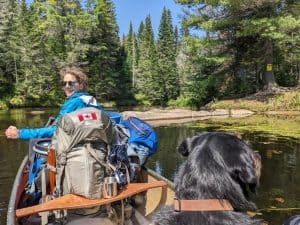
PHOTO – LdL archive
We found that spending at least two hours per day in outdoor activities had a positive impact on adolescents’ overall life satisfaction and happiness. The insights gained from this research can help shape policies and guidelines, as well as potential intervention strategies to improve mental health across the country. In addition, this research can inform future studies to further explore the benefits and potential mechanisms of OPA in relation to youth mental health.
LdL: The project was led by the Healthy Active Living and Obesity (HALO) research group, a research team at the Children’s Hospital of Eastern Ontario Research Institute, in collaboration with Outdoor Play Canada, the Public Health Agency of Canada, the University of Ottawa, and the Australian Alliance for Exercise, Nutrition and Activity Research.
Louise, you are the Executive Director of Outdoor Play Canada, an organization dedicated to supporting Canadian organizations focused on outdoor play and recreation. What is the main mission of your organization and what outdoor activities do you engage in?
LdL: Our mission is to bring together practitioners, researchers and partner organizations to promote, protect and preserve access to outdoor play and the natural environment for all people living in Canada. We support and encourage the outdoor play movement to support the health and well-being of Canadians and to highlight the importance of the environment in which we live.
While we are not program providers ourselves, we work with several organizations that run outdoor programs, including Andrew Fleck Children’s Services, which runs a care program for 73 children on five hundred acres of forested land.
Personally, I am outdoorsy all year round. I bike to work every season, including our Ottawa winters, which this year saw 210 centimetres of snow and temperatures as low as minus 30 degrees Celsius. I also ski, skate, run, hike and swim. I always enjoy being outdoors with friends, family and my dog, even though she doesn’t like running.
Taylor, what was your main motivation as a student and young person to participate in this research? How much time do you spend outdoors?
TB: I have always been interested in mental health and working with children and youth. Having struggled with my own mental health in the past, I am passionate about finding ways to improve my own mental health and, in turn, the mental health of others. I became aware of the deteriorating mental health situation among Canadian youth and children, especially after the COVID-19 pandemic. I wanted to help improve this situation.
The internship opportunity in the HALO research group interested me because it focused on promoting the health of children and youth and also on promoting their physical activity. After discussing possible research topics with my supervisor Dr. Jean-Phillipe Chaput (researcher in the HALO research team – ed. note) it was clear that we wanted to focus on mental health. I am very grateful for this experience and the opportunity to contribute to a great organization and amazing research.
I spent a lot of time outdoors as a child. I grew up in the rural Ottawa River Valley with plenty of freedom to explore the surrounding nature and the river itself. My favorite activities included biking, swimming, skating, skiing, playing soccer, exploring the wilderness – nature walks or catching frogs, and playing classic outdoor games – jumping rope or hide-and-seek. I grew up in a transitional period when social media and electronics were becoming increasingly popular.
As I entered my teens, I began to spend less and less time outdoors. However, after entering university, I realized how much positive impact being outdoors had on my mental health and set a goal of spending at least an hour outdoors every day. I was constantly looking for ways to spend more time outdoors, whether it meant moving my desk outside to study, or taking up other activities – running, hiking, skating, among others – that helped me de-stress. Outdoor physical activity became desirable to me again and it became clear to me that it was an integral part of supporting my mental health.
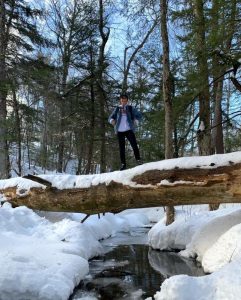
PHOTO – TB archive
Your research also discusses the fact that Canadian teenagers spend significantly less time outdoors than in the past, which is also reflected in their physical and mental health. According to experts, this is a global trend and a problem for young people all over the world. In Slovakia, the number of children and young people seeking help from a psychologist or psychiatrist is constantly growing, and they are most often troubled by stress, anxiety and depression. How are young Canadians doing in the area of mental health?
LdL: The mental health of young Canadians is a major concern. Before the COVID-19 pandemic, approximately one in five adolescents in Canada suffered from a mental illness or substance use disorder. The pandemic has exacerbated social isolation and fixation on social media and phones, resulting in a significant increase in the already alarming trend of mental health disorders among young people. Young women have been particularly affected.
In Slovakia, a direct survey on the average amount of time children and teenagers spend outdoors has not yet been conducted, but from similar surveys in Europe we know that children and teenagers spend less than an hour outdoors on average, which is very little. What is the daily recommended amount of time outdoors in Canada? And what percentage of adolescents manage to engage in physical activity outdoors within this range?
LdL: There are currently no official recommendations for how much time Canadian adolescents should spend outdoors each day, but a general goal is two hours a day. According to the 2024 Physical Activity Report for Children and Youth, only fifteen per cent of children and youth aged five to eleven in Canada spend two or more hours a day outdoors in physical activity. For adolescents aged twelve to seventeen, that percentage drops to 4.9.
The pandemic has exacerbated social isolation and fixation on social media and phones, resulting in a significant increase in the already alarming trend of mental health disorders among young people. Young women have been particularly affected.
TB: To add to what Louise said, the Canadian 24-hour movement guidelines for children and youth (which include guidelines on physical activity, sedentary behavior, and sleep – ed.) recommend that time spent indoors be replaced with time spent outdoors, such as an hour of outdoor exercise, for greater health benefits for adolescents.
What other information did your research reveal, and how many respondents did you interview? What was the most important finding for you?
TB: Although we did not speak directly to the participants, we used the 2019 Canadian Child and Youth Health Survey, which includes data from 11,007 participants aged 12–17. In it, adolescents answered several questions related to their mental health and time spent physically active outdoors.
The most important finding for me was the correlation between outdoor physical activity and life satisfaction. It is easy for young people today to feel dissatisfied with life due to various social and academic pressures. This finding reinforces the importance of regaining our connection with nature and the outdoors in order to feel whole.
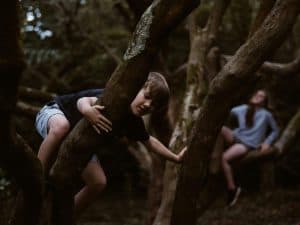
PHOTO – unsplash.com
Another piece of information our research revealed was simply the need for more research. This is a growing area of interest, but we lack longitudinal and interventional studies to track changes in behavior over time and better understand the mechanisms behind the associations we identified in the survey.What specific benefits have you observed in children who regularly spend time outdoors and in nature?
LdL: It is now well established that when children are outdoors, they move more, sit less and play longer. Active outdoor play is associated with improved physiological functions, including improved musculoskeletal and cardiorespiratory fitness, reduced blood pressure and improved mental health outcomes, including improved resilience and stress management. This evidence was also mentioned in the 2015 statement on active outdoor play, but as it has been ten years since that statement was published, we are developing an update that is global in scope and covers all ages. In this update, we explore the links between active outdoor play and the health and well-being of people, animals and the environment. The update will be launched on September 25, 2025 in Ottawa at the Canadian Centre for Outdoor Play.
TB: I will just add that outdoor play can also facilitate socialization with other children and the community, leading to reduced feelings of isolation and strengthened interpersonal skills.Are there differences in the impact of being outdoors on children from different socio-economic backgrounds?
LdL: There certainly are. In Canada, people living in lower-income households, immigrants, and minorities typically have lower levels of “greenness.” Statistics Canada also found that people born in Canada engage in significantly more outdoor activities than immigrants. Among immigrants, men engage in more outdoor activities than women.
TB: Lower parental education is also associated with shorter periods of time spent outdoors, especially among girls.
There is a lot of talk about wellbeing and life satisfaction in our country – not only in schools, but also in the business sector and in the population as a whole, as part of the search for life balance. During the pandemic, when measures were relaxed, crowds of people, previously locked in their homes and apartments, flocked to nature to gain energy and strengthen themselves mentally. Nature acted as medicine and, combined with movement, offered an inspiring way to spend time. What do you think is the main reason why people today are losing their connection with nature and spending less and less time in it?
LdL: I feel like a lot of it is that we have made being indoors the “easier choice.” It is much easier and more comfortable to stay indoors, in spaces with controlled temperatures and a variety of entertainment to indulge in. Conversely, it takes effort to dress appropriately and find the motivation to get out of the comfort of our homes. But we know that when we do, we feel better.
We are slowly losing touch with our neighbors due to our car-centric culture – we travel too often in our cars, isolating ourselves from the outside world, and when we park, we immediately move inside. But when we lose touch with our surroundings and don’t know our neighbors and don’t meet, how can we feel comfortable and safe outside and let our children roam and play freely there?
We have also lost the ability to perceive that we are part of nature. The sooner we realize that we are one and that nature is part of our community that we should value, the better we can learn to connect with it and care for it.
It’s much easier and more comfortable to stay indoors, in temperature-controlled spaces with a variety of entertainment to indulge in. Conversely, it takes effort to dress appropriately and find the motivation to venture out of the comfort of your home.
TB: I agree with Louise. We have a lot of entertainment at our fingertips that both soothes and isolates us. Social media, movies, TV shows, and games are addictive and have become the norm in today’s world. These addictions further reinforce our disconnection from the real world and nature.
There has also been an increase in urbanization and a consequent loss of access to natural areas for exploration and play. A topic that our research did not explore was the quality of outdoor space, natural versus man-made. So while children may engage in physical activity outdoors, they may not always gain the added value of spending time in natural and natural environments, which again reinforces this discrepancy.
Our disconnection from nature can also stem from a lack of knowledge, specifically a lack of understanding of the extent of the benefits of connecting with nature. During my research, I found that adolescents, while they consider connecting with nature important, are also spending less and less time outdoors.
Strengthening the evidence base, promoting awareness of the benefits of spending time outdoors and in nature, and finding effective ways to support adolescents in reconnecting with nature are areas that should receive more significant work in the future.
What should cities and municipalities do to encourage children to spend time in nature – even in urban environments?
LdL: Let’s go back to my point about the easier choice: we need to promote, protect and preserve access to outdoor and natural play spaces near where children live.
In North America, there is a movement to create play centers in and around schoolyards after school hours to encourage children to play together in these spaces, in a variety of age groups, with minimal adult supervision. For these efforts to be successful, municipalities need to work with community organizations and schools to provide access to these spaces for children after school hours.
There is also a need for these groups to work together to manage and eliminate traffic around schools, making streets near schools safer for playing and traveling to and from school. Finally, there is a need for greater social acceptance of supporting children’s independence by encouraging children to walk, bike, or roller skate to and from school, preferably with their friends and with minimal adult supervision. Depending on their age, of course.
Social media, movies, TV shows, and games are addictive and have become the norm in today’s world. These addictions further reinforce our separation from the real world and nature.
How do you plan to use the research findings in practice?
LdL: Our research has highlighted the benefits of outdoor play for promoting the mental health of children and adolescents in Canada. Its findings, along with a growing body of work on the health and well-being of people and the environment, can inform public policy, public health, and advocacy efforts. They may also be useful for community-based organizations seeking strategies to address adolescent mental health decline.
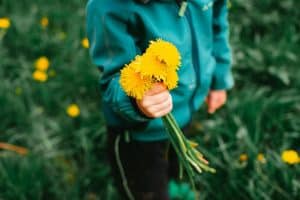
PHOTO – unsplash.com
Can you tell us what your immediate plans are and what you want to do in the near future?
LdL: As we mentioned, a major project we are currently working on is the release of a ten-year update to the position paper on active outdoor play. This statement will include a call to action and an extensive list of recommendations to support organizations like Živica in research, advocacy, and practice in advancing efforts related to promoting outdoor movement and play. Consider this an invitation to join us.
TB: I plan to continue advocating for outdoor physical activity and supporting Louise and Jean-Philippe wherever needed. I also plan to continue my studies in the health field with the hopes of getting into a physician assistant program and eventually specializing in family medicine or pediatrics.
I believe that we will be able to develop Canadian-Slovak cooperation in the field of research and support for outdoor living and learning, and to inspire each other. If everything goes well, we will welcome you in September as guests of the fourth annual outdoor educational festival Hurá von! in Zaježová. What would you like to say to educators, parents, or guides who work with children and young people or are in regular contact with them?
TB: Try to lead by example and set them up for success. Discover new fun outdoor activities, dress appropriately for the terrain, integrate the outdoors with learning wherever you can, take them to new places. We believe these activities will help foster their love of the outdoors. Keep up the great work.
LdL: Keep doing what you are doing and find time for yourself, the children and the young people you care for, to go outside every day and in all weathers. I look forward to joining you in September at the Hurá von! festival at the Zaježová Educational Center.

